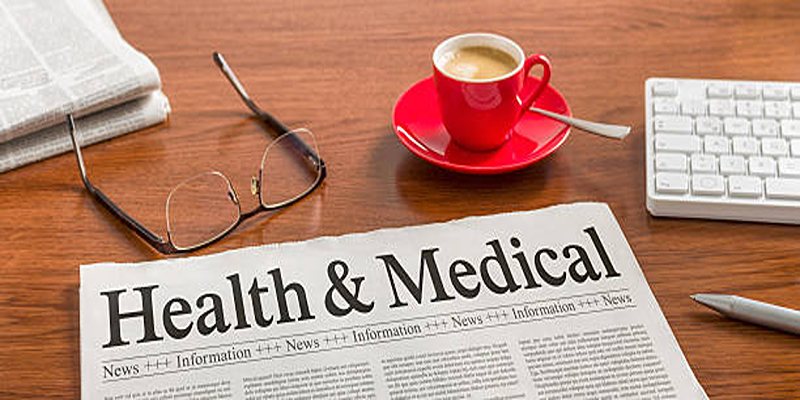Signs Your Body Needs More Fiber: What to Watch For
Fiber is vital to a healthy diet, yet many individuals don't get enough. This may cause digestive and general health difficulties. Understanding the signals that your body needs more fiber might help you make dietary changes. This blog will discuss the significance of fiber, symptoms that you may need more, and ways to increase your fiber consumption.
Dietary Fiber Matters
Fiber is an indigestible carbohydrate. It survives the digestive process and maintains biological functioning. Dietary fiber is soluble or insoluble. Water-soluble fiber lowers cholesterol and glucose. Oats, beans, lentils, apples, and citrus contain it. Insoluble fiber does not dissolve in water and promotes regular bowel motions. It includes whole grains, nuts, seeds, and fruit and vegetable skins.
A diet high in fiber has several health advantages. It assists digestion, weight management, cholesterol reduction, blood sugar stabilization, and heart health. However, many people don't get enough fiber daily despite its benefits. The recommended daily consumption is 25 grams for women and 38 grams for men. Recognizing the signals that your body needs more fiber may improve your health.
Signs You Need More Fiber
The body signals fiber needs in numerous ways. Some indications are more visible than others, but all suggest dietary changes. These indications allow you to improve your health proactively.
Constipation
Constipation is a typical indication of fiber deficiency. Low-frequency or difficult bowel motions indicate this disorder. Fiber bulks feces and eases digestion. Fiber deficiency may cause stiff, dry stools that are hard to pass. Fiber consumption should be assessed if you strain during bowel motions or spend days without one.
Consuming more fruits, vegetables, whole grains, and legumes might help relieve constipation by providing bulk for bowel movements. Whole grains and vegetables are rich in insoluble fiber, which promotes intestinal regularity. Hydration is also essential when increasing fiber consumption; water helps fiber operate in your system.
Post-meal hunger
Fiber deficiency may also cause post-meal hunger. Fiber-rich meals enhance satiety. Low-fiber, refined carbohydrate meals may cause fast blood sugar increases and decreases, increasing appetite after eating. This loop may make portion control and weight management challenging.
To fix this, eat additional high-fiber foods. Whole grains, beans, lentils, fruits with skin (like apples or pears), and veggies keep you satiated longer. Prioritizing these items during meals and snacks boosts satiety and provides critical nutrients.
Uneven Blood Sugar
Insufficient fiber may cause daytime energy and mood changes owing to unstable blood sugar levels. Fiber helps regulate blood sugar by decreasing sugar absorption. Low-fiber diets, mainly those heavy in simple carbs, may cause fast blood sugar spikes and drops.
These swings might cause exhaustion and frustration as your body strives to maintain energy levels. For stable blood sugar, eat more soluble fiber sources, such as oats, legumes, fruits like berries and bananas, and vegetables like carrots and sweet potatoes. These nutrients inhibit digestion and maintain energy throughout the day.
High Cholesterol
High cholesterol is another indicator that you need extra fiber. Soluble fiber lowers LDL (bad) cholesterol by attaching to cholesterol molecules in the digestive tract and helping them pass. Check your fiber consumption if you had a cholesterol test that showed high LDL or total cholesterol.
Soluble fiber-rich foods, including oats, barley, beans, lentils, chia seeds, and certain fruits, may lower cholesterol over time. Along with a low-fat diet, these foods help improve cardiovascular health. Monitoring cholesterol levels with dietary modifications will show how well they're working.
Digestion Problems
Bloating or other digestive issues may indicate a need for fiber. Fiber supports gut motility and balanced gut flora in a healthy digestive tract. Low fiber might result in bloating and irregular bowel motions. If you have regular stomach pain or diarrhoea-constipation cycles, you may need to reconsider your fiber intake.
Consuming more high-fiber meals and staying hydrated helps enhance digestive health. Foods high in soluble and insoluble fibers promote regularity and support good gut microbes!
Practical Ways to Eat More Fiber
After discussing indicators of fiber deficiency, let's review how to include more fiber in your everyday diet.
Start Slowly
Fiber should be added gradually to help your digestive system adapt. Ingesting too much fiber too rapidly might cause gas or bloating. Start with one or two servings of high-fiber meals daily and gradually increase until you reach the recommended daily consumption. This progressive method will reduce dietary change pain and give you time to adjust! As you acclimate to more excellent fibers, observe how it feels and make modifications depending on personal preferences!
Choose Whole Grains
Choosing whole grains over processed grains is an easy way to increase fiber consumption. Whole grains' bran and germ layers contain most nutrients and fiber, whereas processed grains remove them. Choose whole grains such as brown rice, whole wheat bread, quinoa, barley, oats, and whole grain pasta. These foods include more dietary fiber and vitamins and minerals that improve health!
Add Fruits and Vegas
Fruits and vegetables with intact skins are rich in fiber. For the best nutrition, serve half your plate with bright fruits and vegetables at each meal. Raspberries, pears, apples, bananas, broccoli, carrots, sweet potatoes, spinach, artichokes, Brussels sprouts, avocados, and legumes like chickpeas or lentils add texture to salads and stews. These nutrient-dense options add taste and deliver vitamins and minerals for general health!
Smartly snack
Snacking may help you get more fiber without feeling deprived between meals! Instead of processed snacks like chips or cookies, try high-fiber foods like fresh fruit (apples or pears), raw vegetables (carrots or bell peppers) with hummus, nuts (almonds or walnuts), air-popped popcorn with herbs, and whole grain crackers with cheese! These snacks boost nutrition and help you reach your daily fiber goals. You'll feel satiated longer and enjoy incredible tastes by eating more brilliant snacks throughout the day!
Choose Supplements Carefully
Fiber supplements may help if dietary adjustments aren't enough, but getting nutrients from food is ideal! Before beginning any supplement program, contact a healthcare expert to ensure safety and efficacy match particular objectives! Supplements should accompany whole foods, not replace them! Prioritize natural high-fiber foods over supplements!
Benefits of Fiber Intake Over Time
Beyond easing acute symptoms, eating enough dietary fiber has several long-term health advantages. Research repeatedly reveals that fiber-rich diets improve overall health.
- High-fiber diets decrease cholesterol and regulate blood pressure, improving heart health. Regular fiber intake from oats and legumes reduces the risk of cardiovascular disease.
- Fiber is crucial to weight management! High-fiber diets promote fullness and reduce cravings between meals, helping people maintain healthy weights!
- Fiber boosts gut microbiota diversity, which affects digestion and immunity! Balanced gut flora improves food absorption and prevents GI problems!
- Research reveals that high-fiber diets may lessen the incidence of type 2 diabetes and many diseases. These nutrients benefit people by maintaining their blood sugar and promoting bowel movements!
- Gut health may affect mental wellness, according to new research! Healthy gut microbiomes improve mood control and reduce anxiety/depression!
Conclusion:
Maintaining good health requires recognizing indicators that your body needs more fiber. Fiber helps us stay healthy by relieving constipation, balancing blood sugar, and boosting heart health! Understanding how much dietary fiber we need daily and incorporating practical techniques into our routines empowers us to live better—gently changing yields permanent outcomes! Take tiny measures now to embrace fiber's advantages while eating great meals!











